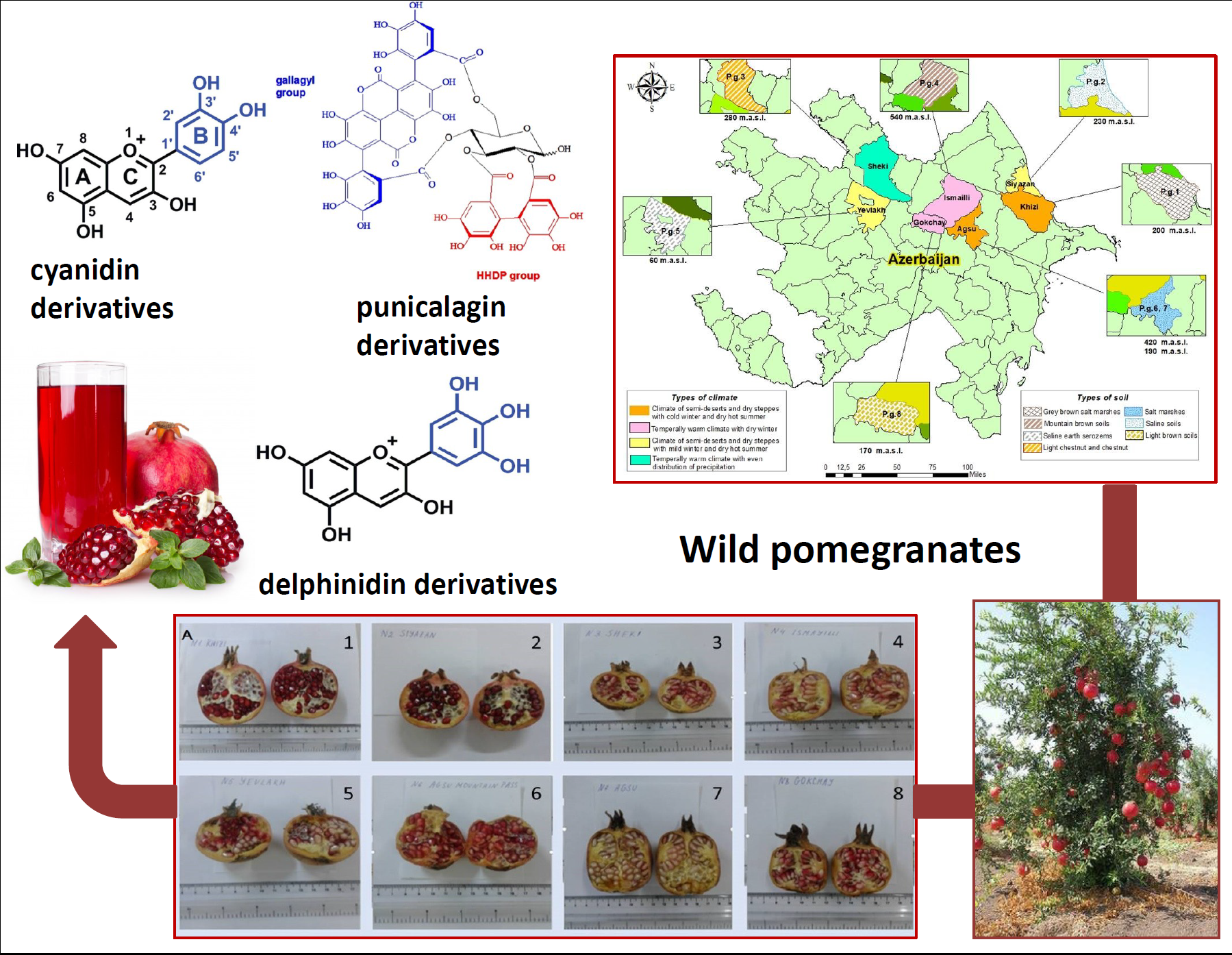
Published 2020-06-05
Keywords
- anthocyanins,
- phenolics,
- tannins,
- wild-growing pomegranate
How to Cite
Abstract
The demand for pomegranate (Punica granatum L.) juice is increasing worldwide due to its documented health-promoting effects which likely derive from phenolic compounds. This study reports the phenolic composition of the juices obtained from eight wild-growing pomegranate accessions collected in eight areas of Azerbaijan, characterized by different climate and soil composition. The anthocyanins found in all the accessions were cyaniding derivatives and pelargonidin derivatives, while only two accessions contained also delphinidin-3,5-O-diglucoside. The main hydrolysable tannins contained in the juices were punicalagin and ellagic acid derivatives. These bio-active metabolites found in the juices varied qualitatively and quantitatively among the eight accessions, thus constituting specific traits for selecting promising accessions that can be used as a nutritious food source. The different phenolic profiles might be determined both by genotype and the growing environmental conditions, or by their interaction. Our results suggest that some of the studied wild-growing pomegranate accessions might have a commercial value because of their richness in bioactive metabolites and might constitute a suitable source of genes for breedin programs.





